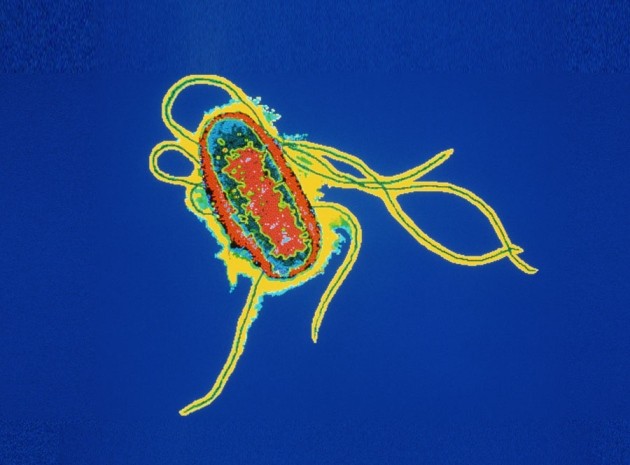Synthetic biologist Matthew Chang at Nanyang Technological University in Singapore has armed Escherichia coli bacteria with a ‘seek and kill’ system that targets cells of Pseudomonas aeruginosa, an invasive bacterium that causes pneumonia and other illnesses. In preliminary tests with infected mice, the modified bacterium left a trail of dead P. aeruginosa in its wake.
Chang and his team had previously developed an E. coli that could brew up an antibacterial peptide called pyocin, and then explode to release its deadly cargo whenever it detected a chemical signal emitted by its prey2. Now the bioengineered vigilante is back — and it is tougher than ever.
The researchers inserted genes into E. coli to make a killing peptide called microcin S (MccS). This is smaller than pyocin, so the E. coli can secrete it, rather than delivering the payload in a single suicidal burst. That means that fewer of the modified bacteria are required to treat an infection.
The team then loaded the engineered bacterium with genes to make a nuclease called DNase I. This efficiently slices through the protective biofilm that envelops P. aeruginosa colonies by breaking down the nucleic acids that help to hold the biofilm together.
The researchers programmed their E. coli so that it cunningly keeps its powder dry until it is close to its mark. It can detect a P. aeruginosa messenger molecule used for a process called quorum sensing, by which the invader assesses its own population density. Each E. coli generates a protein that latches on to a quorum-sensing molecule, forming a complex that activates its weapons systems.
That complex also controls E. coli’s movement, so that the bacterium swims towards higher concentrations of a quorum-sensing molecule — a process called chemotaxis. As it homes in on its quarry, the E. coli ramps up its ammunition production.
“That’s the real gem of this work,” says William Bentley, a synthetic biologist at the University of Maryland in College Park. “I think it’s really innovative.” Some of these tactics have been used individually in other bioengineered bacteria, but “putting it all together is totally new”, says Bentley. The assassin is unveiled this week in ACS Synthetic Biology
Story Source:
The above story is based on materials provided by Nature magazine, Mark Peplow.





